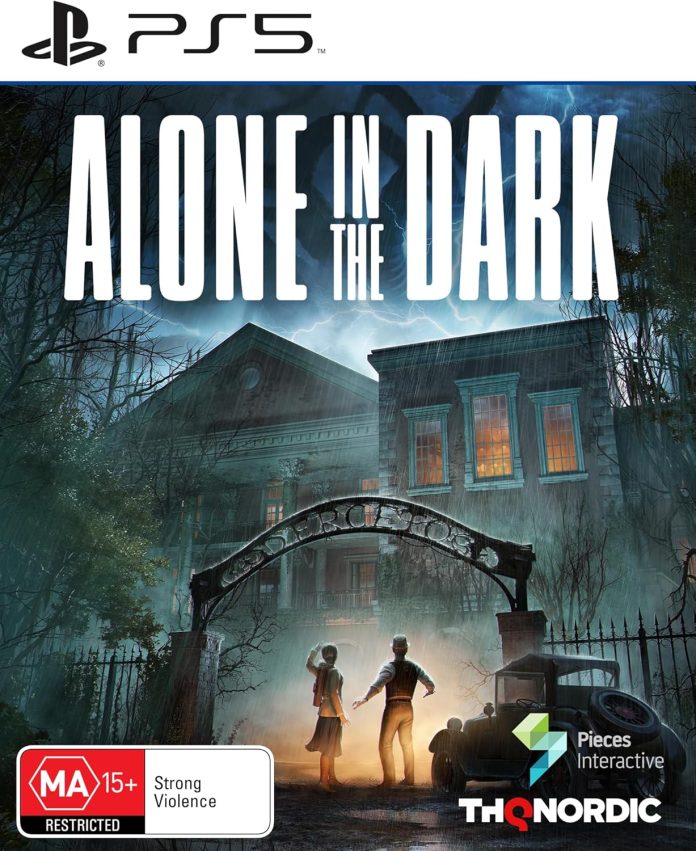The horror genre in video games has evolved significantly over the years. One title that has made its mark on this genre is Alone in the Dark. As I dove into this game, I felt a mix of nostalgia and intrigue, given its historical significance in the survival horror scene. In this review, I will share my thoughts on the gameplay, graphics, storyline, and overall experience of “Alone in the Dark.”
Overview of Alone in the Dark
Released in various iterations since its inception in 1992, Alone in the Dark has undergone several transformations. The latest version aims to blend classic elements with modern gameplay mechanics. As I navigated the game, I appreciated its attempt to honor its roots while appealing to a new generation of gamers.
Storyline and Setting
The narrative of Alone in the Dark revolves around themes of mystery, horror, and survival. Set in a haunted mansion filled with dark secrets, players are thrust into an environment that is both captivating and terrifying. The storyline unfolds through exploration and interaction with various characters and elements within the mansion.
I found the plot engaging, with twists that kept me guessing. The backstory is rich and helps to create a sense of dread as I explored the eerie surroundings. The developers have successfully crafted a narrative that intertwines well with the gameplay, making each discovery feel meaningful.
Gameplay Mechanics
The gameplay of Alone in the Dark is where it truly shines. As I played, I noticed a perfect balance between exploration, puzzle-solving, and combat. The controls felt intuitive, allowing for a smooth navigation experience throughout the mansion. I also appreciated the inventory system, which is crucial for managing resources in a survival horror game.
One notable aspect of the gameplay is the emphasis on environmental interaction. I enjoyed how the game encouraged me to interact with objects in the environment, whether it was searching for clues or utilizing items for self-defense. This element kept me engaged and added depth to the overall experience.
Graphics and Sound Design
Visually, Alone in the Dark strikes a chord between atmospheric and realistic. The graphics are impressive, showcasing detailed environments that contribute to the eerie ambiance. I found myself genuinely immersed in the game’s visual storytelling, with well-designed lighting effects that heightened the sense of dread.
The sound design also deserves mention. The ambient noises, coupled with haunting musical scores, enhanced the overall atmosphere. I often found myself on edge, listening for the slightest sound that might indicate danger. This attention to audio detail significantly contributed to the immersive experience.
Character Development
The characters in Alone in the Dark are well-crafted and add depth to the storyline. I found myself invested in their fates, as the game allows for character development through interactions and choices. The dialogues felt natural, and the voice acting was commendable, which further enriched the gaming experience.
Each character has a unique backstory that ties into the larger narrative, making my interactions with them feel significant. I appreciated how the game allows players to explore different character arcs, adding replayability to the experience.
Challenges and Puzzles
As I progressed through Alone in the Dark, I encountered a variety of challenges and puzzles that tested my problem-solving skills. The puzzles ranged from simple tasks to more complex riddles that required thorough exploration and critical thinking. I found this aspect of the game rewarding, as successfully solving a puzzle often led to significant narrative advancements.
However, there were moments when the puzzles felt a bit too obscure, which could potentially frustrate some players. Despite this, I enjoyed the challenge and felt a sense of accomplishment when I finally unraveled the mysteries of the mansion.
Combat System
The combat system in Alone in the Dark is another crucial element of the gameplay. I was impressed with the variety of weapons available, from melee options to firearms. The combat felt visceral, and I appreciated the need to conserve ammunition, which added to the survival aspect of the game.
However, I did encounter some issues with the enemy AI. While some enemies were genuinely terrifying, others felt predictable and could detract from the overall tension. Nonetheless, the combat system is functional and contributes to the game’s horror elements.
Replayability and Longevity
One of the standout features of Alone in the Dark is its replayability. With multiple characters to choose from and various paths to explore, I found that my experience could differ significantly with each playthrough. The choices I made impacted the narrative, leading to different outcomes.
This aspect makes Alone in the Dark a game that I would recommend revisiting. The blend of exploration, combat, and storytelling ensures that players will find something new and engaging with each playthrough.
Conclusion
In conclusion, Alone in the Dark successfully combines classic horror elements with modern gameplay mechanics. The rich storyline, engaging gameplay, and immersive graphics create a compelling experience that I found hard to put down. While there are minor flaws, such as some puzzle difficulty and AI issues, the overall package is impressive.
For fans of the survival horror genre, Alone in the Dark is a title worth exploring. It pays homage to its roots while paving the way for future entries in the franchise. If you’re looking for a game that balances atmosphere, storytelling, and gameplay, I highly recommend giving Alone in the Dark a try.
<iframe width="560" height="315" src="https://www.youtube.com/embed/fD0Z9bbNcrk?si=2CltIOpLYBNDcxNk" title="YouTube video player" frameborder="0" allow="accelerometer; autoplay; clipboard-write; encrypted-media; gyroscope; picture-in-picture; web-share" referrerpolicy="strict-origin-when-cross-origin" allowfullscreen></iframe>




.jpg?w=100&resize=100,70&ssl=1)
